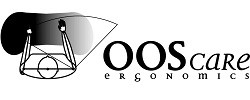How to avoid eye strain at work
The eyes should not be neglected. Muscles control the eyes, and these muscles need a change in position too to avoid eye strain at work.
If you have been looking at a monitor for longer than about 15 minutes, you need to swivel on your chair and focus on something straight ahead of you in the distance. This relaxes the eye muscles. Take the opportunity to get up and stretch - this will provide a change in posture. As computer monitors are generally positioned at a greater distance than for reading paper, standard “reading” prescription glasses are often inappropriate for computer work. Discuss this with your eye specialist. Eyes can get sore and tired if they have to deal with glare or flickering or fuzzy monitors.
POSTURE PLAYS A PART
Maintain a posture with back tall, with hip, elbow and knee angles at 90 degrees or greater. Alter position frequently and stand from the chair at least once an hour. Generally, the neck should not twist or bend to the side, and consider a headset if the phone is used frequently. The upper arms should hang freely beside the body, and shoulders should be relaxed. Read more about how to sit properly.
GLARE
Glare can be a major problem in modern office spaces, particularly open-plan areas. Glare can result in not just sore eyes and headaches but poor postures. People adopt poor posture to place themselves between the sources of glare and the monitor, thus blocking out reflections. Glare is best dealt with by finding the source and controlling it there. Some options for controlling glare are:
- Putting diffusers on lights
- Drawing blinds over windows at different times of the day
- Repositioning the monitor, though care needs to be taken so that other posture problems are not introduced - it may require the work surface to be rearranged.
To minimise the opportunity for glare to be an issue on monitors, the screen surface would ideally be placed perpendicular to the windows. Screen or glare filters provide a remedy for problems of reflections in glass screens but not for direct glare. Flat-screen monitors do not usually have glass screens, and the various materials (plasma, gel, etc) already have very good reflected glare resistance.
LIGHTING
Many offices use general lighting for all areas of the office. This can lead to too much lighting for computer work. Lighting design that allows for some flexibility in the lighting level is recommended. The normal recommended illumination at clerical workstations is around 500 lux.
FLICKERING AND FUZZY IMAGES
Computer screens should not flicker, and the image should be crisp and clear. Sometimes all that is required is for the user to adjust brightness, contrast and clarity settings on the screen. New LCD and other thin-filter digital displays offer very sharp, stable images. They also take up less desk space and this can be a big advantage when positioning screens and sizing work spaces and floor areas. They also offer potential power savings and reducing heat and airconditioning load.
